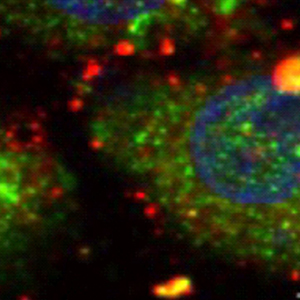Transcription factor nuclear factor erythroid 2 p45-related factor 2 (NRF2) ameliorates sepsis-associated acute kidney injury by maintaining mitochondrial homeostasis and improving the mitochondrial function
Mitochondrial dysfunction has a role in sepsis-associated acute kidney injury (S-AKI), so the restoration of normal mitochondrial homeostasis may be an effective treatment strategy. Transcription factor nuclear factor erythroid 2 p45-related factor 2 (NRF2) is a main regulator of cell-redox homeostasis, and recent studies reported that NRF2 activation helped to preserve mitochondrial morphology and function under conditions of stress. However, the role of NRF2 in the process of S-AKI is still not well understood. The present study investigated whether NRF2 regulates mitochondrial homeostasis and influences mitochondrial function in S-AKI. We demonstrated activation of NRF2 in an in vitro model: lipopolysaccharide (LPS) challenge of ductal epithelial cells of rat renal tubules (NRK-52e cells), and an in vivo model: cecal ligation and puncture (CLP) of rats. Over-expression of NRF2 attenuated oxidative stress, apoptosis, and the inflammatory response; enhanced mitophagy and mitochondrial biogenesis; and mitigated mitochondrial damage in the in vitro model. In vivo experiments showed that rats treated with an NRF2 agonist had higher adenosine triphosphate (ATP) levels, lower blood urea nitrogen and creatinine levels, fewer renal histopathological changes, and higher expression of mitophagy-related proteins [PTEN-induced putative kinase 1 (PINK1), parkin RBR E3 ubiquitin protein ligase (PRKN), microtubule-associated protein 1 light chain 3 II (LC3 II)] and mitochondrial biogenesis-related proteins [peroxisome proliferator-activated receptor γ coactivator-1 (PGC-1α) and mitochondrial transcription factor A (TFAM)]. Electron microscopy of kidney tissues showed that mitochondrial damage was alleviated by treatment with an NRF2 agonist, and the opposite response occurred upon treatment with an NRF2 antagonist. Overall, our findings suggest that mitochondria have an important role in the pathogenesis of S-AKI, and that NRF2 activation restored mitochondrial homeostasis and function in the presence of this disease. This mitochondrial pathway has the potential to be a novel therapeutic target for the treatment of S-AKI.
How to Cite

This work is licensed under a Creative Commons Attribution-NonCommercial 4.0 International License.
PAGEPress has chosen to apply the Creative Commons Attribution NonCommercial 4.0 International License (CC BY-NC 4.0) to all manuscripts to be published.








